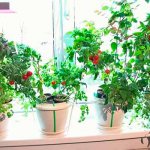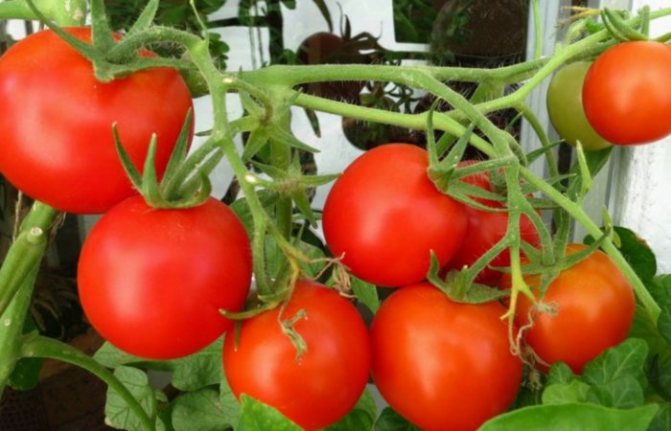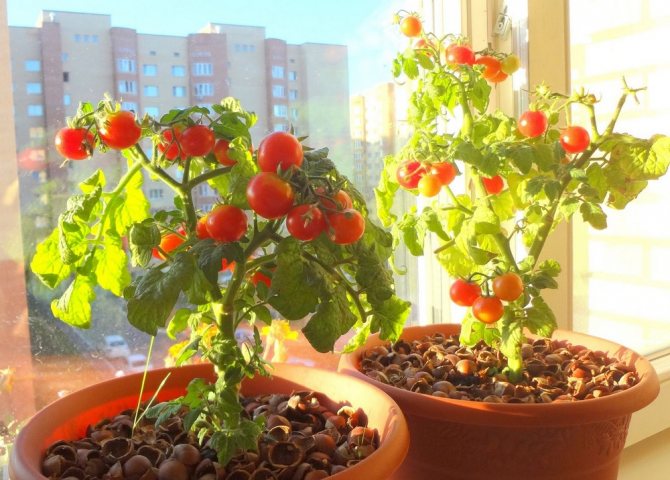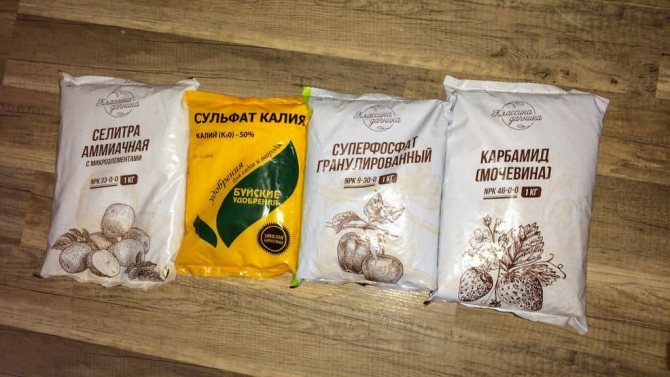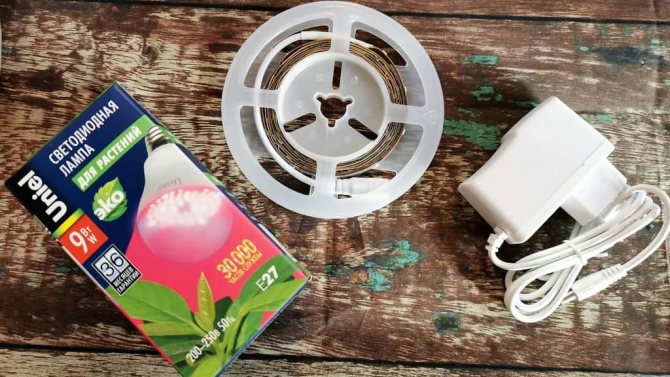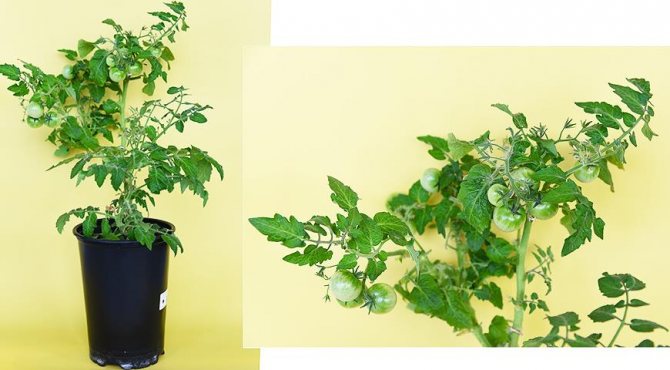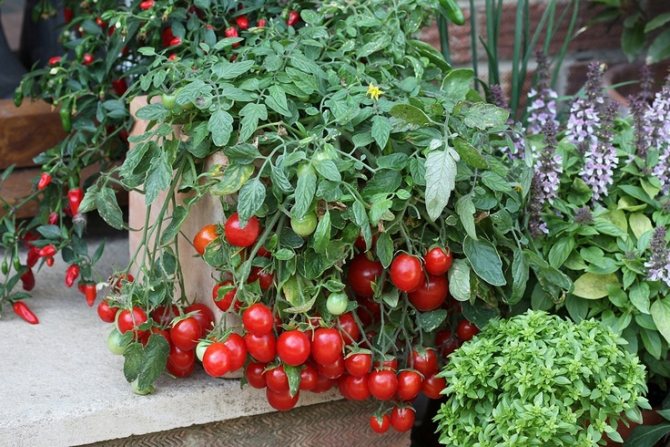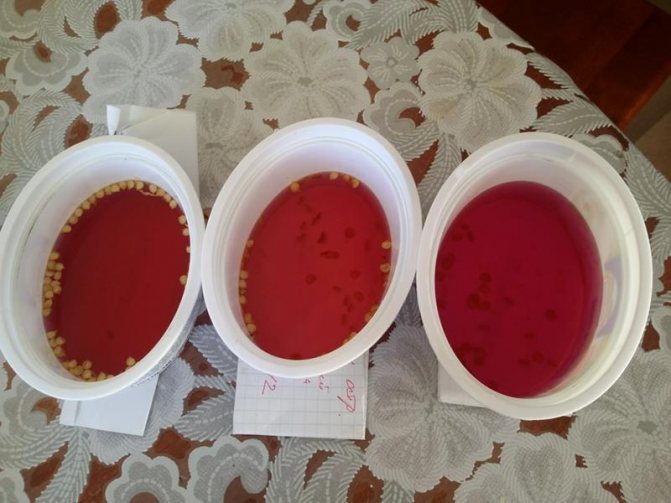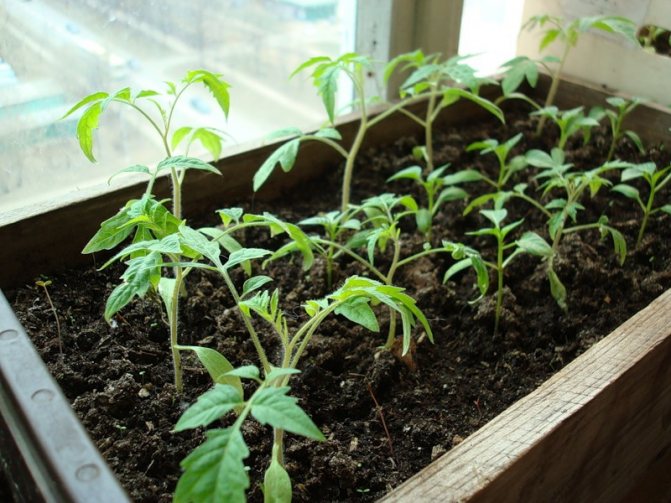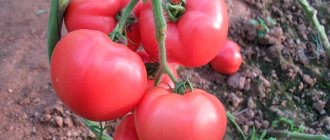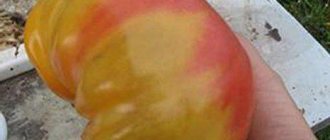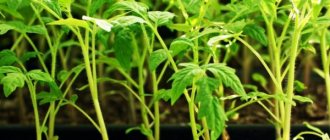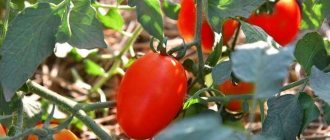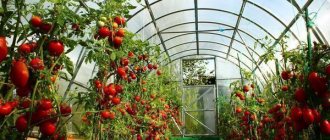Home / Garden / Tomatoes
Back to
Published: 09/29/2018
Reading time: 6 minutes
1
1407
4 / 5 ( 1 voice)
4 / 5 ( 1 voice)
Tomatoes appeared in the diet of Europeans not so long ago - 400 years ago. And before that, for almost a hundred years, plants were considered purely decorative, and the fruits were poisonous. Tomatoes were brought by the Spaniards who conquered South America.
Obviously, someone tasted unripe tomatoes and got poisoned. Indeed, green tomatoes cannot be eaten raw because of the high content of solanine poison. This led to the fact that tomato bushes were grown in gardens for beauty.
To date, more than 4,000 officially registered varieties have been bred, about 5,000 more are of amateur selection, and the number of hybrids has already exceeded 20 thousand. Conventionally, all varieties can be divided into three groups - for open ground, for growing in greenhouses and indoor tomatoes. We will tell you about the latter in detail.
Have questions? Ask and get useful advice from professional gardeners and experienced summer residents. Ask a question >>
- 1 Features of indoor tomatoes
- 2 What varieties of tomatoes can be grown on a windowsill in pots? 2.1 Indoor mini tomatoes of American selection
- 2.2 Dwarf varieties of domestic selection
- 4.1 The best standard varieties with a guaranteed yield
Hello dear readers!
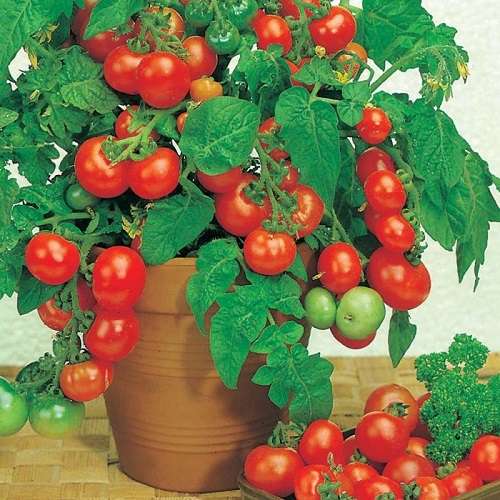
Well? Maybe it's time for us to take a chance and aim at growing tomatoes in our home garden.
Of course, we will not be able to grow so many vegetables at home to collect them in buckets, but you will definitely get a dozen or two red tight fruits in the middle of winter.
In addition, they will become a real decoration of your apartment, and you can feast on sweet tomatoes and admire a cheerful little vegetable garden with bright fruits, thereby satisfying your gardening addictions.
Want to ? So, let's start growing a tomato on the windowsill at home and create a unique, beautiful, home garden full of vitamins.
- Tomatoes on the windowsill have long ceased to be exotic. It is quite easy to grow and care for them, you just need to know the simple conditions of such an original agricultural technique.
Experienced gardeners will be happy to share with you the secrets of growing indoor tomatoes. Creating a home garden will bring you real pleasure!
This is a very pleasant and exciting activity, and your children will be happy to help you arrange your home garden and take care of it.
How to grow tomatoes on a windowsill? How to create the most favorable conditions for the ripening of the tomato crop on the windowsill?
This is what the further conversation will be about.
Output
It is not difficult to grow tomatoes, the main thing for you is to do this work at least once, and then with experience everything will be easy at all. Your crops will take literally 10 minutes a day, so even those who get home late can grow tomatoes. The video in this article will help you understand the topic even better, and if you have questions, write them in the comments below.
September 21, 2020
Windows, Gardening
If you want to express gratitude, add clarification or objection, ask the author something - add a comment or say thank you!
Choosing a suitable variety
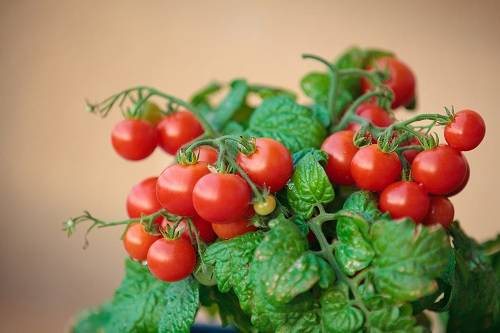

For a mini-garden on the windowsill, of course, varieties of dwarf, undersized tomatoes are needed. Their fruits are small, and the plants themselves willingly inhabit small pots.
There are a great many varieties of tomatoes of such types.
- Experienced gardeners know that choosing a suitable variety of baby tomatoes takes a long time, choosing the best one is possible only by trying and making mistakes. Indeed, each apartment has its own atmosphere, different climatic conditions.
Tomatoes in different dwellings will behave individually, this gives a certain shade of surprise to the upcoming chores.
So, we choose:
♦ For small windowsill. For a windowsill of a small, standard size, tiny dwarf tomatoes will be ideal:
- Minibel. The height of the bush is about 30 cm. Tomatoes weighing 20-40 g are collected in compact bunches of 8-10 pieces.
- Florida Petite. Plant height up to 30 cm, bright red fruits weighing 30-40 g are very sweet. Up to 15-20 tomatoes are collected in one brush.
- Balcony miracle. One of the most popular ultra-early maturing domestic varieties. Pink tomatoes weighing 20-30 g will delight you with a bountiful harvest after 80 days.
- Balcony red. The bright red little tomatoes will be ready to eat 90 to 95 days after planting. The fruits are very sweet and aromatic.
- Bonsai. Each bush about 30 cm high will bring you 500-600 g of bright, tasty little tomatoes.
- Bonsai micro. The smallest variety of tomato on the windowsill. The bushes grow up to only 15 cm. They can be grown in a hanging basket, admire the beautiful view and enjoy the fragrant tiny fruits.
- Pinocchio. If you plant small cherry tomatoes in September, a harvest of fragrant fruits will be ready by the New Year holidays. This variety is considered one of the best for creating a garden at home.
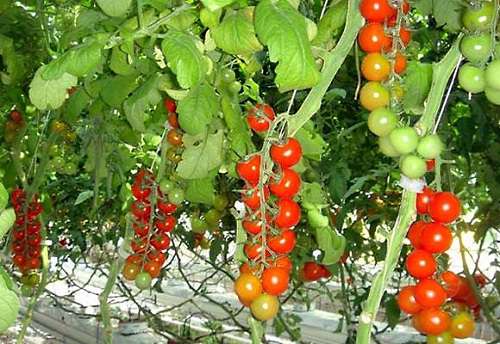

♦ For insulated windowsill. If your windowsill is wider, has a good area for placing boxes or flowerpots, a vegetable garden on the windowsill can be created from varieties of tomatoes with larger fruits and a high stem.
- Balconies Elo. With the first harvest of yellow round tomatoes, the variety will delight you after 100-110 days. The taste of a tomato is sweet with a slight sourness, the bush grows to 45-50 cm.
- The pearl is red and yellow. The culture grows up to half a meter and has excellent decorative qualities. Pearl of red has a sweeter taste. Their weight reaches 50 g.
- Hermitage. This fruitful variety is recommended to be grown in the northwest regions. The fruits are large enough, their weight can reach 100 g.
- Native. An early type of tomato. Raspberry-colored fruits, large (up to 180 g). This variety is especially resistant to cold conditions.
- Igranda. An early variety, high-yielding and resistant to sudden changes in temperature conditions. The fruits are fleshy, round and bright red. Their weight can reach 150 g.
- Russian Troika. Tomato bushes are small, they grow up to 60 cm. But the fruits are very large and fragrant, their weight sometimes reaches 300g!
At first, you can try to plant several varieties of tomatoes at once on the windowsill and observe how the tomatoes will behave in order to focus on the types that are ideal for your apartment.
Seedling planting rules
To plant a crop correctly, you must adhere to the following rules:
- slightly moisten the soil;
- seeds are sent to small holes, 2 cm retreating between each of them, while the planting depth should be 1.5 cm;
- the planted seeds are covered with glass or film, which will allow the liquid to remain in the soil;
- tomato pots are sent to a dark, warm place until the shoots appear;
- periodically, as it dries, the soil is wetted.
Arrangement of a vegetable garden on the windowsill
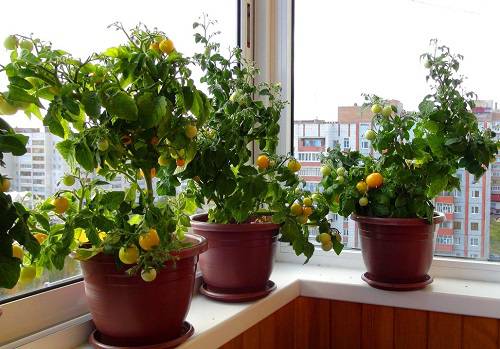

♦ What is the best window sill? Tomatoes love light (if it's not enough, flower buds will fall off), so the best lighted windowsills (best on the south side) will be the best home for them.
Growing on a windowsill should be carried out with additional organization of artificial lighting for your garden (use energy-saving fluorescent lamps).
It will be great if you use sources of short-wave radiation of red-blue light (phytolamps).
- Additional lighting must be placed at least 25-30 cm from the top leaves of the seedlings. Daylight hours for tomato babies are 13-16 hours.
Lamps should be turned on for tomatoes on the windowsill when cloudy weather reigns outside. They must be used in the early morning before dawn and in the evening after the sun has gone.
♦ When to sow seeds. There are two terms for sowing tomatoes:
- Summer and autumn. Seedlings are grown in July-August, you will already receive fruits in November-December.
- Winter-spring. Seedlings should be started in November-December. The first harvest will wait for the owner in March-April.
Transfer
After the first shoots appear, the container with tomatoes is moved to the windowsill. From this time on, the temperature regime in the room should be + 22 ... 25 ° С in the daytime and + 15 ... + 17 ° С in the evening. The crop cover is removed.


Basically, you should wait until 2-3 leaves appear on the plant. Next, picking of seedlings is carried out: it is necessary to select the strongest and most grown sprouts and place them in a prepared container. The volume of the pots must be at least 8 liters. For small plants, a container of 5 liters is suitable.
Growing features
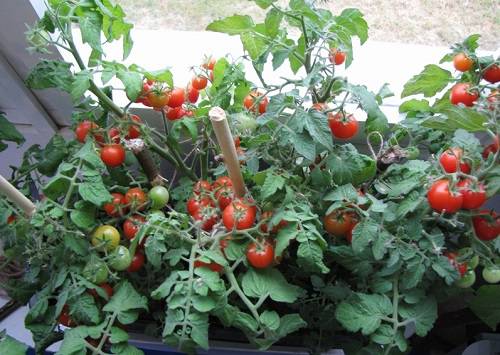

When you purchase seeds, be very careful about the quality of the planting material. Always check the expiration dates.
Expired seeds may remain in the ground, or you will get weak, stunted plants.
♦ Disinfection of seeds. Immediately before planting, we need to disinfect the seeds and prevent them from becoming infected with late blight.
To do this, we soak the seeds for 20 minutes in a weak solution of potassium permanganate. Then, to increase germination and stronger growth, we will use "Epina" or any other growth stimulant - the seeds should be kept in it for about 10-12 hours.
♦ Germination. Having chosen the necessary varieties of tomatoes, we begin the process of germinating seeds. We place them in a small bowl, cover with moistened gauze and leave warm for 3-4 days.
As soon as our tomatoes have small roots, we need to plant them.
♦ Where we plant. For growing tomato seeds, plastic or peat cups with a volume of about 200 ml are best suited.
Shallow pallets can be used. We fill the containers with soil:
- You can use an earthen mixture (in the amount of 45% black soil, 5% sand and 50% humus). Add a little manganese to it for disinfection. Make sure that the soil is not clayey.
- Or use a mixture of soil, humus (5 parts each), sand and peat (1 part each).
Add urea to the finished soil (8-10 g of urea per bucket of soil). Stir in wood ash (1-2 cups), superphosphate (40 g) and potash fertilizer (40 g).
Stir the earthen mixture thoroughly and place in cups.
♦ Disembarkation. Place the tomato seeds in small depressions at a distance of about 2 cm between each seed. They should be placed at a depth of 1-1.5 cm.
Moisten the soil slightly before sowing. Cover the sown seeds with a film or glass, such a coating will retain moisture well in the soil.
We place the containers in a dark and warm place (+ 25-30 ° С) and wait for germination. The soil can sometimes be moistened.


♦ Transfer. After the tomatoes have given their first shoots, we transfer the containers with them to the windowsill and create a daytime temperature regime of + 22-25 ° С, night + 15-17 ° С.We remove the cover.
And when two true leaves appear, the tomatoes must be dived and planted for permanent residence.
- The volume of permanent pots for young tomatoes on the windowsill should be about 7-10 liters.
♦ Leaving. Small tomatoes are afraid of drafts and cold watering. Excessive watering also harms them (they can pick up infectious diseases).
Tomato seedlings can be gently ventilated on very hot days.
- To provide the tomatoes with normal humidity, when airing, place a glass filled with water next to them. After the end of airing, the glass is removed.
With further care, our tomatoes should be regularly watered and fed (in a liter of water, dilute 1 g of potassium and urea sulfate and 5 g of superphosphate). Fertilizers need to be applied every 7-10 days.
Plants can be fertilized with water-diluted mullein (ratio of 5 parts of water to part of mullein), chicken droppings (part of droppings 15 parts of water).
Use water for irrigation at a comfortable room temperature (+ 20-25 ° C). Plants should be watered as the soil dries up.
We water our tomatoes on the windowsill abundantly, wetting all the ground, while it is advisable to pour water on the soil near the bush, but not at the very root.
After watering, be sure to loosen the soil - this will slow down the evaporation of moisture.
- We begin to apply top dressing as soon as the tomato grows 5-6 true leaves, at the beginning of flowering, also during the formation of ovaries.
Do not forget to loosen the soil near the roots. But do it very delicately - the roots of the tomato are still too tender and may be damaged.
Simultaneously with loosening, carry out hilling of plants - this will contribute to the formation of new roots. If the soil has settled a little, add a portion of fresh (peat or nutrient mixture).
Sometimes stepchildren (additional stems) may appear in some tomato varieties. They must be carefully removed (pinned). Pickling will improve the nutrition of the tomato fruit.
We will also remove dried leaves (especially those located closer to the root of the plant - dry leaves inhibit the access of moisture to the root system).
Fertilizers and soil for planting
The recommended dose of fertilizer should not be exceeded, as this leads to the accumulation of a large amount of unnecessary and harmful microelements in the fruits. Therefore, the plant can be fed with general mineral fertilizers twice every 30 days and with simple plant tinctures.
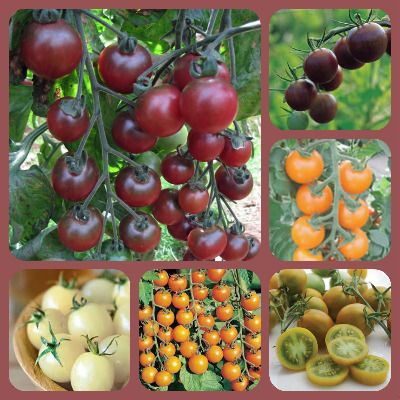

It also recommends preparing a good quality potting mix for better growth. For these purposes, you can use turf or garden soil, compost, peat and sand. It is also allowed to add charcoal, which contains almost the entire complex of minerals, except for nitrogen.
Recommendations: in order to more effectively mix the soil, simple mechanical mixing of all the components of the mixture is not enough. It is necessary to mix with spraying of each layer. With the help of such a simple technique, you can achieve a greater structuring of the planting substrate.
We are waiting for the harvest
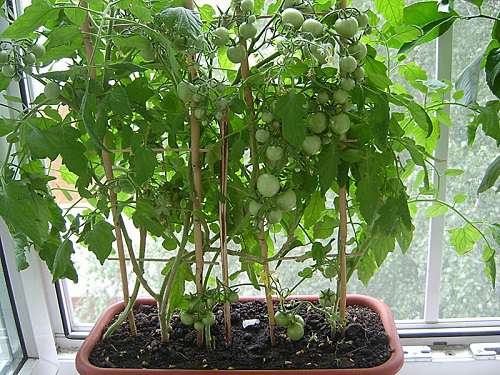

During flowering, our tomatoes can occasionally be shaken slightly and carried over the flowers with a gentle feather - this will improve the pollination process.
Once the fruit is ovary, the top of the stem and inflorescence should be removed to help the fruit form more quickly.
- To protect young tomatoes from late blight (this fungal disease threatens tomatoes even in winter), the leaves and stems of the tomato should be periodically treated with an infusion of manganese and garlic (for 3 liters of water, ½ g of potassium permanganate and half a garlic head).
Experienced gardeners use another technique for faster formation of tomato fruits on the windowsill.
It is called "tearing the roots": take the tomato by the lower area of the stalk and very carefully pull it up, as if you want to pull the plant out of the ground.
During this movement, small roots break off. After the procedure, the plant should be watered and spud.
- During the flowering of tomatoes, experienced gardeners advise additional spraying of the second and third brush of plants so that the fruits are better formed and tied. Tomatoes are sprayed with a solution of boric acid (dilute a gram of substance in a liter of water).
When our tomatoes are already ripe, the branches of the plant should be tied to sticks-pegs. Otherwise, the stems may break under the weight of the fruit.
It is advisable not to wait for the full ripening of tomatoes on the bushes, but to harvest them brown.
Under indoor conditions, tomatoes will ripen quickly, and the next crop will ripen better and faster on the bushes.
Common Beginner Mistakes
Among the common mistakes beginners make, growing tomatoes on the windowsill, are:
- Wrong choice of crop variety. Those who are determined to grow tomatoes on the window should study all the information available on the account of suitable tomato varieties.
- Violations at the stage of planting culture. Some do not pay enough attention to the preparation of planting material, seedlings and soil. At every stage, mistakes can be made that will cost the newcomer a harvest.
- Poor seed quality. This includes problems such as the acquisition of old or spoiled seeds, during which high yields are minimized. It is recommended to purchase seeds exclusively in specialized stores, paying attention to the date indicated on the package. However, in some cases, even this does not guarantee the purchase of a quality product, for example, if the seeds were not stored according to the rules.
- Neglected diseases. Sometimes, when the plant withers, the crop owner believes that the tomatoes lack water, so they begin to overly moisturize the soil, which leads to the inevitable death of the plant.
- Improper care. Poor lighting comes first. Tomatoes require light, and beginners do not pay enough attention to this fact and place containers with seedlings on the windowsills on the north side. It is also important to comply with the norms for watering the culture, ventilate the room, do pinching, etc.


Balcony wonders
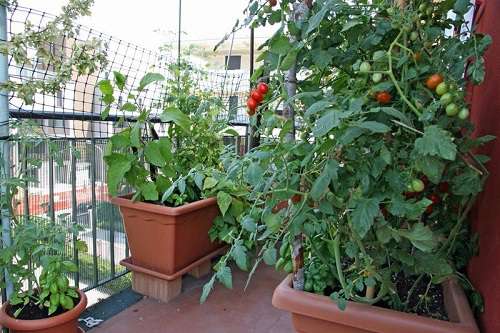

As a home greenhouse, you can perfectly use your own loggia. If you have them insulated, you can successfully grow tomatoes on the balcony from early cool spring to gloomy late autumn.
- On insulated balconies / loggias, it is best to sow tomatoes in early March, if your balcony is open, postpone the event to the end of April.
The most ideal loggias and balconies for tomatoes are southern or southeastern. On the northern windowsills, and on the balconies, tomatoes can freeze, and on the southwestern ones it will be too hot in the summer heat (if you grow tomatoes in such places, shade your plantings on hot days and ventilate them).
A balcony or loggia gives the plants more room to grow. Therefore, in such conditions, you can engage in breeding and tall small-fruited cherry (cherry) and cocktail varieties of tomatoes:
- Minibell, Tiny Tim, De Barao, Carlson, Angelica, Zhemchuzhinka, Butterfly, Ballerinka, Romantic, Verlioka, Red Banana, Gina, Max, Cascade Red and many other varieties.
Germinating seeds and replanting tomatoes for permanent residence should be the same as when growing tomatoes on a windowsill. Since you can grow taller tomatoes on the balcony, we will form them into two stems:
- To do this, we will leave one stepson under the very first inflorescence. We tie the stepson to an additional peg or on a trellis. Shorter varieties can be formed into 2-3 stems (in addition to the first stepson, we also leave the second one).
Stepsons tomato on the windowsill, also on the balcony, it is better not to cut it off, but gently break it off with your fingers. Break off carefully, trying not to touch the leaves and the central shoot.
Extra stems should be removed as soon as you can grasp them with your fingers.
At the same time, leave 2-3 cm of a column from the stepson. It is best to hold such an event in the morning.
Tomatoes have long stems and can easily break off. To prevent this, as the tomato seedlings grow, we will tie them to a trellis or pegs.
In the future, tomatoes are tied to the stakes two more times, and when using the trellis, it is necessary to twist the tops of the tomatoes every week around the twine tied to the trellis.
Do not forget to ventilate your pets after each watering by opening the balcony doors. If suddenly your tomatoes begin to curl the leaves during the day - do not worry. This is quite normal for tomato plants.
But if the leaves rush straight up, being located at an acute angle, while not twisting at all, this should alert you.
- The reason for this behavior of tomatoes may be too dry soil, insufficient ventilation or poor lighting.
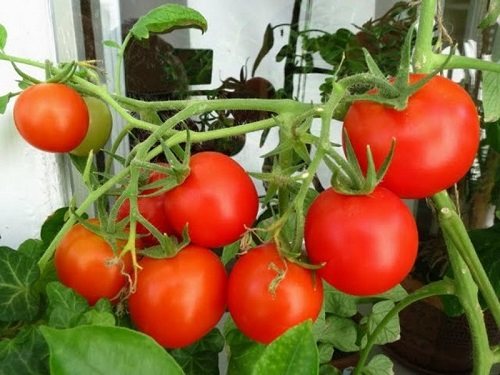

You should not be zealous with watering and feeding (especially with fertilizers containing nitrogen and organic matter).
At the same time, tomatoes begin to "fatten" - to start up powerful, thick stems, to grow strong stepchildren.
But at the same time, weak flower brushes are formed.
To fix the situation, use the following techniques:
- Do not water your pets for a week and a half.
- To delay growth, carry out foliar feeding of tomatoes with superphosphates (for 10 liters of water, 3 tbsp. L). Tomatoes are processed at the rate of a liter of mixture for each plant.
- Increase the ambient temperature to + 27-28 ° C.
- The flowers of these plants should be manually pollinated using a soft brush.
Otherwise, the care and maintenance of balcony tomatoes does not differ from our actions when growing a tomato on a windowsill.
Of course, not all vegetables can be grown at home, but still there are quite a few of those that feel great when visiting us.
These are all kinds of greens (dill, parsley, cilantro), and citrus fruits (lemon, tangerine), and vegetables (peppers, cucumbers, etc.). The cultivation of cucumbers at home will be discussed in the next article of the cycle "Garden on the windowsill"
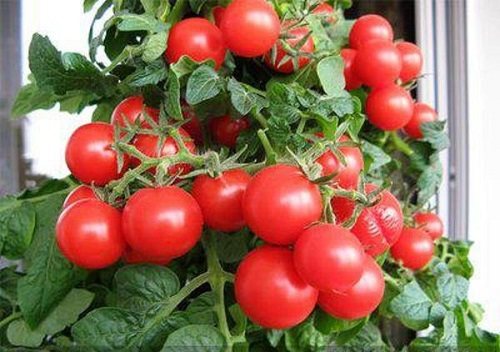

See you soon, dear readers!
How and what to water tomato seedlings at home
Watering should be carried out depending on the weather and the age of the tomato.
In the first months, the seedlings need more regular watering (after 1 day). The procedure should be done carefully, without overdoing it. As the seedlings get older, they will require less water and retain moisture better. They check the moisture content of the soil according to the same principle - focusing on the structure of the soil (dry first layer or not).
Tomato is a plant that does not like high humidity, but also does not tolerate dry soil. The condition of the land should be carefully monitored.
When the plant begins to bloom, water it several times every 7 days (no more than 2 times). A good water temperature for humidification is at least 22 ° C.
The optimal time for watering a tomato growing in an apartment is evening. During the day, you can only water through the pallet. It is undesirable to perform the procedure under the scorching rays of the sun.
An important rule for watering tomatoes is to prevent water from getting on the petals and stem (only the soil is moistened). On hot days, you can spray with water through a spray bottle.
Transplanting into large pots
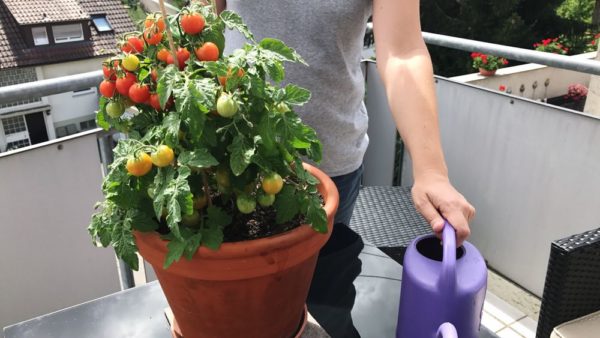

After 1.5 months after picking, the final transplantation of plants into flowerpots for constant growth is performed. A drainage layer is laid on the bottom of the pot, and then filled with nutritious soil.
The capacity is selected, taking into account the varieties of tomatoes:
- for dwarf varieties, 2 l pots are enough;
- medium-sized tomatoes are planted in a 4 liter container;
- for ampelous options, flowerpots of at least 5 liters are used.
The seedlings are moved by the transshipment method.To facilitate the task, the day before this, the plants are well watered so that when moving the earthen lump retains its shape. The free space at the edges of the pot is then filled up with fresh soil.
Seed preparation
To grow a good "tops", and then - to remove the red crop from the brushes, you will have to stop at seedlings, which are preceded by growing from seeds. For the latter you will need:
- Seeds from a trusted manufacturer (with barcode);
- Settled and barely warm water;
- Capacity with a volume of at least 2.0 liters;
- Planting soil;
- Transparent film or glass.
First, the seeds are germinated to accelerate the emergence of their seedlings from the ground. To do this, they must be soaked in water for 24 hours, provided that the water changes every 8 hours. This is due to the release of oil from the grains, which reduces the oxygen level in the water, which slows down hydration.
Good seeds should settle at the bottom, but even if this has not happened, tomatoes can be grown with a bang. This is facilitated by quality land. It must be prepared from a ready-made substrate for seedlings or a mixture of store peat with turf soil (ratio 1: 1). But it is difficult to grow indoor tomatoes in the yard soil, because it is most inhabited by spores of fungal diseases and even pests. The latter are very voracious, therefore, when using poor soil, you should not be surprised why the seeds sprout poorly. They are fragrant, which is why they quickly attract insects.
It is necessary to plant tomato seeds together in one container, at a distance of 7-10 cm from each other. The ground must be moist. The optimum planting depth is 0.7-1.0 cm. The capacity may be shallow (5-10), but with an area sufficient for planting a certain amount of seeds. Therefore, when growing seedlings, it is better to prefer rectangular containers to traditional round pots.
After planting the seeds, the soil must be watered again, and the container must be covered with foil or glass so that the moisture does not evaporate before mass germination. In total, for every 10 seeds, 0.5-0.7 liters must be consumed. water.
On a note! Contrary to popular belief, the first watering should be done without fertilizing. The fact is that high-quality planting material already has everything necessary for the growth of seeds, which is why top dressing will only increase the risk of burns
Diseases and pests, ways to deal with them
Of the ailments, the following are most common:
- Late blight. In this case, brown spots appear on the tomatoes, which increase over time. You can fight with a tincture of garlic. Spraying is carried out several times at intervals of 5 days.
- Fusarium wilting. It is characterized by wilting and yellowing of the lower leaf plates. Over time, other leaves begin to turn yellow. To get rid of this ailment, you need to treat the plant with the Barrier or Hom preparation. After that, it is important to loosen the soil as often as possible.
- Alternaria. It is distinguished by gray small spots that look depressed. They fight this disease with the help of drugs such as Antrakol, Consento, Tattu.
Let's call tomato pests.
- Whitefly. This insect causes yellowing of the leaves, which soon turns black. You need to fight whitefly with Confidor.
- Slugs. They eat leaves and fruits. Affected plants begin to rot. For the prevention of slugs, you need to treat the soil with a solution of ash, tobacco dust or lime.
- Spider mite. Looks like small dots on tomatoes. Sucks the sap from the plant, which leads to death. A tincture of garlic or dandelions will help. Laundry soap can be added to the solution.
- Medvedka. Quite a large insect, the length of which reaches 5 centimeters. Affects the main root system of the plant. The fight is carried out using a tincture of bitter pepper or vinegar.
It is quite possible to grow tomatoes in an apartment in winter. And this is not difficult.Therefore, if you want to have tomatoes of your own cultivation in the winter, you need to make a little effort and take the time. The main thing is only to wish.

